On the shortcomings of modern synthesizers and how to deal with them
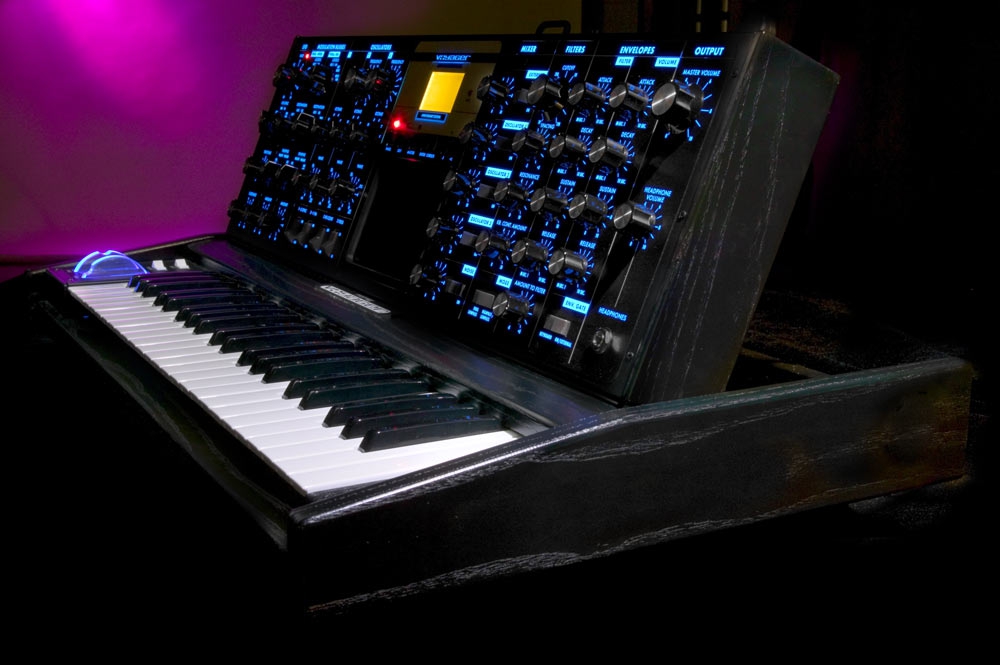
Everyone loves music. But not everyone is able to play it. Only a few are able to create it, and even fewer people create musical instruments for this. Legendary instruments, on a par with legendary composers and musicians, are included in history, but few are interested in these same instruments. We are interested. So why not make your microscopic contribution to history?
Background
I remind you that this is my vision of history. Who is afraid of distorting the facts, or just knows it, this topic can be missed.
')
It all started in the 60s of the last century, when electronic music was cut and glued onto tape by some enthusiasts who believed that the future was behind it. They, of course, did not lose, although the conditions for her recording, to put it mildly, then left much to be desired, and only quite rich musician-engineers could afford it. Why engineers? Because they created the very "cosmic" sounds on huge, cabinet-like machines, which were called sound synthesizers. These were monophonic instruments, but they didn’t really need polyphony - by pressing one key, they could reproduce as many voices as the musician was rich - the synthesizer could safely complete all with new and new modules, which are described below. Often the keyboard was absent altogether, or contained only a couple of octaves - it almost did not play a role. To deal with the synthesis of sound and record electronic compositions, it was not enough to be just a musician - at the sight of a pile of wires and a huge cabinet, I just wanted to take my guitar and pass by. So music began to be written by those who were far away from it, which led to the fact that synthesizers were associated with tons of wires ...
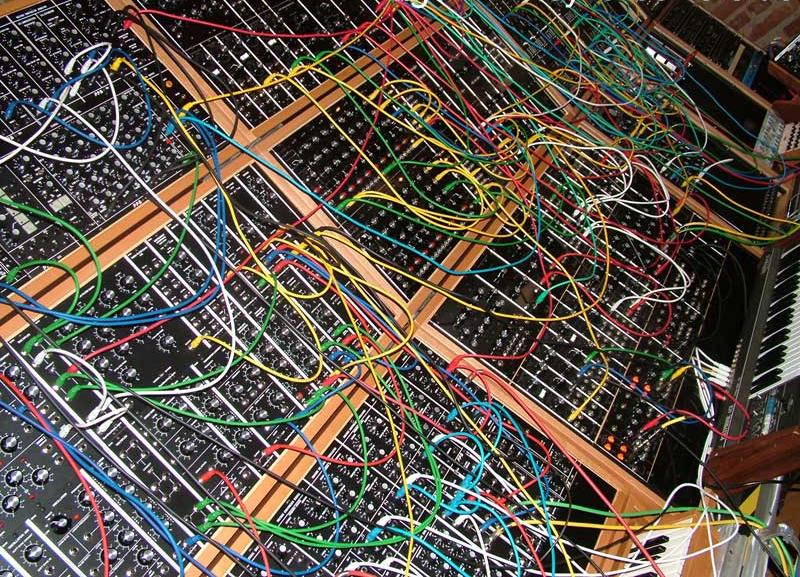
... and healthy cabinets!
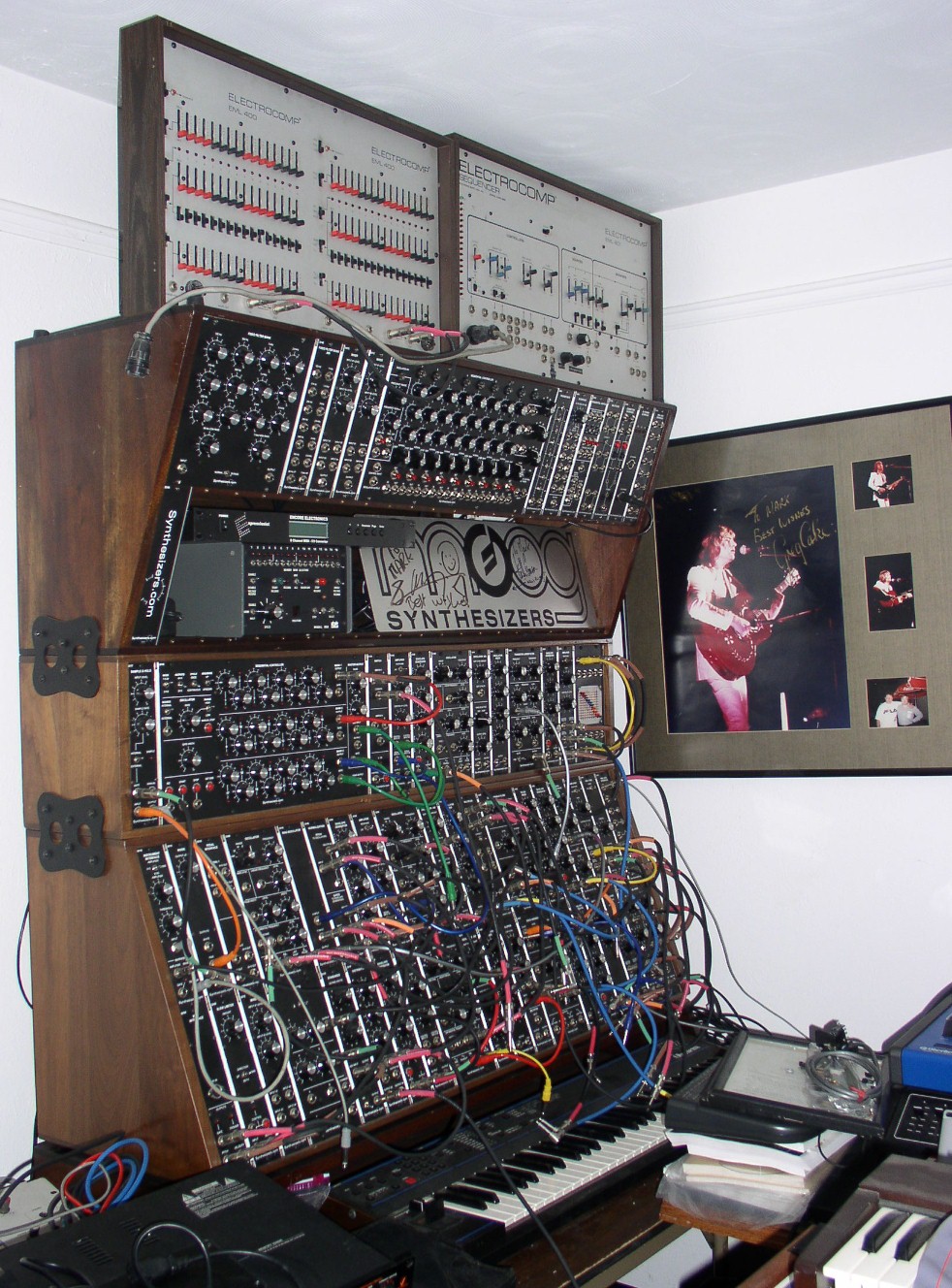
But already in the 70s, the sound of the famous “Modulars”, created by students under the floors of boring engineering universities, began to erupt, and almost all the bands and musicians were interested in it. The huge, no, the largest role in the development of "electronics" was played by the American company "Moog", named after the name of the founder and producing lamp heads before that time. Robert Moog was just a superhero, devoting the rest of his life to analog synthesizers. His company still exists successfully, and its products are the ideal sound quality of vintage analog synthesizers.
By the way, In Soviet Russia also made analog synthesizers that were known far beyond its borders. Here is a classic example of the very legendary Polivox.
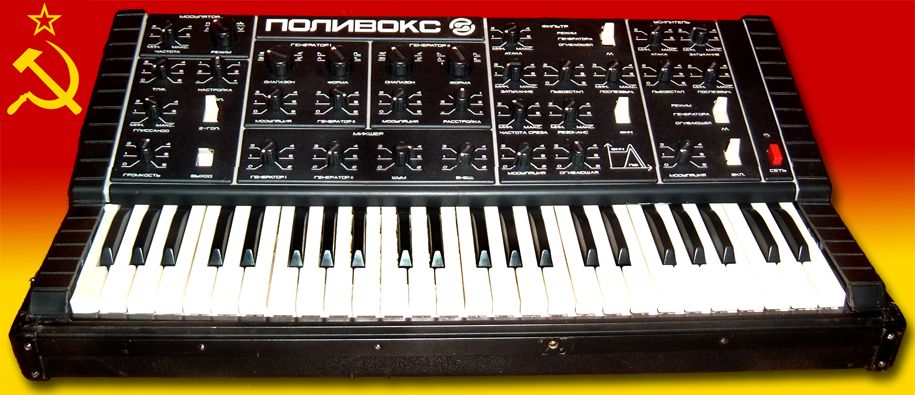
Somewhere in the 80s, digital synthesizers appeared and began to develop; their era continues to this day, as it is not difficult to notice. But people tend to get tired. Firms such as Casio or Yamaha suddenly lost customers (but not popularity), because people, tired of their bored presets, remembering the warm and versatile sound of the old hulk, rushed to their grandfathers in the attic to get them back. Weakened and almost bent firms, which were still producing modular synthesizers, cut through the chip and began to wring prices. And some newly established companies, such as Waldorf, not only cut this chip, but also made useful conclusions for themselves, preparing surprises for later. When it became clear that modular pleasure was not affordable for everyone, and the presets got it, Waldorf gave birth to Waldorf Q, a new-generation synthesizer that used a new wave table method and combined everything that we, electronic music lovers, lacked: the ability to fully control the synthesis, and besides, it was equipped with buns for subtractive change of sound.
Waldorf Q in the right hands
Well, then you know yourself - computers, plug-ins, cheaper radio components ... Now all types of synthesizers have an equal right to exist, all of them are in demand, but computers and digital synthesis still dominate, and even more presets (yes, yes, therefore, your dabczyk sounds sometimes the same way - modulation by the same parameters, the presets are all similar).
Yamashka workshop, as an example of a modern digital synthesizer
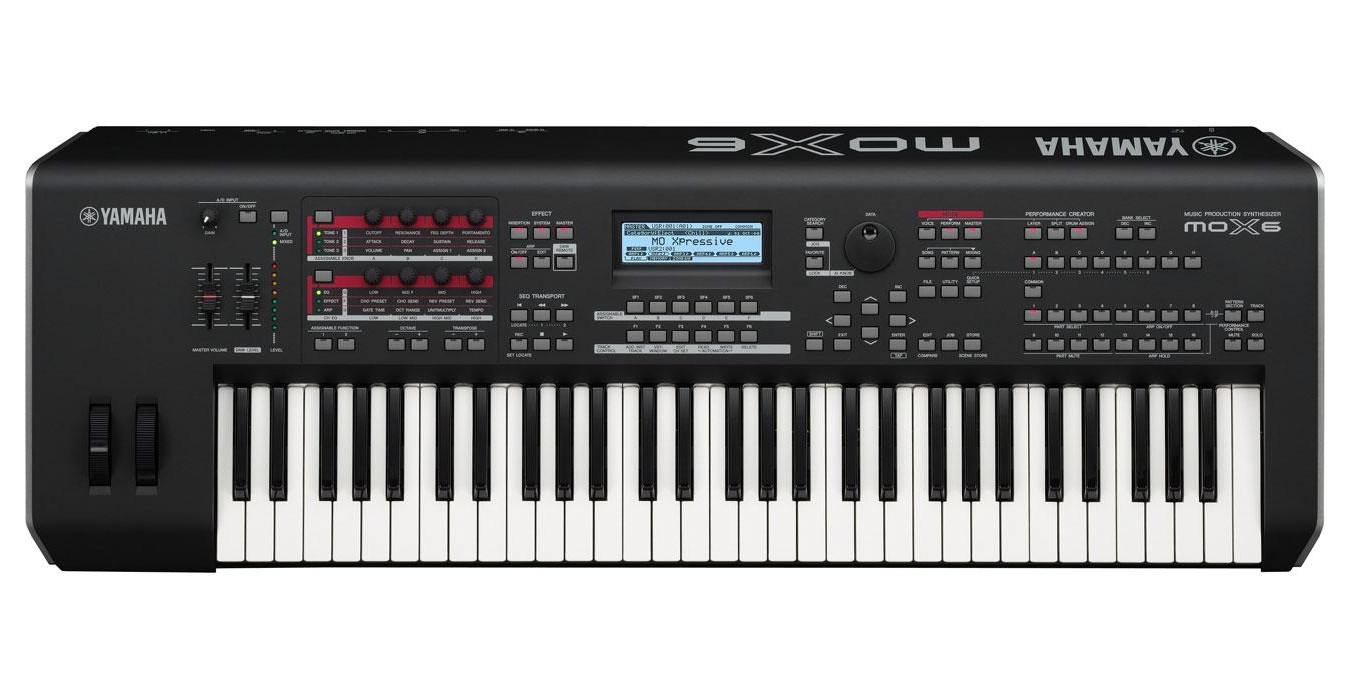 Well, with all the history, with a few exceptions: the big modular synthesizers are AGAIN returned. Details have become cheaper, the schemes previously kept by firms in the strictest confidence have appeared in the now fast Internet. So why not? .. Bat, where is the soldering iron?
Well, with all the history, with a few exceptions: the big modular synthesizers are AGAIN returned. Details have become cheaper, the schemes previously kept by firms in the strictest confidence have appeared in the now fast Internet. So why not? .. Bat, where is the soldering iron?Actually, the project
Taking into account the whole history of these tools, the crazy possibilities of computers and cheap stones, the availability of old schemes and even the availability of step-by-step instructions and tutorials on them, we decided to create something monstrictive ... But first, I will try to list the advantages and disadvantages of classic modular and modern digital synthesizers (hardware synthesizers will be considered, in the sense of physically existing as instruments).
Cons purely modular synthesizers:
- They are big;
- They are unstable (heating components and setting, does not apply to modern homegrown modular with modern details);
- Thousands of wires (connecting modules with patchcords, at best - with a matrix of contacts, but then the possibilities are reduced and the tool ceases to be “infinite”);
- I want to hit a chord, but only the bottom key will work;
- I want to save this configuration for future use, and now collect something else - sorry, it will not work. Draw a piece of paper on a piece of paper, take a picture of the position of the potentiometers, toggle switches and switches - maybe and restore;
- Knobes do not turn themselves. If you want to simultaneously turn ten knobs at different speeds for a beautiful sound change, call the multi-armed Indian gods.
Pros:
- Patch cords (in spite of the inconvenience, these are real, intuitive and tangible connections, not registered in the program, carrying tons of code, lags and endless lists of options for where it can be attached and what to do with it);
- "Infinity" (money appeared? Buy a new module! - the dimensions and equipment of the synthesizer are limited only by the imagination of the instrument holder and the thickness of his wallet (well, by the size of the room, hehe). Almost all modules are independent and can be connected wherever you want, just give each food;
- Flexibility. (what architecture I want, I will tweak it);
- Your sound is absolutely unique. This sound is not in the presets, it can be changed right now during the game. A wide range of sound - from inaudible low to inaudible upper with the same quality as the first and second. In general, this is the TOT sound.
Cons digital synthesizers:
- Limited architecture;
- Immutable architecture;
- Perhaps poor-quality reproduction of low frequencies, because of what they can be divided in the following directions: for dubstep, for drums, for pads, backgrounds and noises.
Pros:
- Small dimensions;
- Provide absolutely all types of synthesis (but each individual instrument is usually a combination of a maximum of two of them);
- You can save configurations and load them directly during playback with one click on the button;
- Polyphony. More money - more polyphony;
- Allow you to carry out a wide range of work with sound, from playback and recording to information, equalization and channeling (a distinctive feature of the so-called workstations);
I wanted to combine these two types of tools and try to get rid of some minuses and not lose their dignity. But first, a tutorial on how a modular synthesizer works. You can rummage around here , on the left you need to find the section MFOS In The Classroom / Analog Synth 101 - everything is perfectly written there, though in English.
Here are the main modules (in brief):
Generator
Generator (VCO, Voltage Controlled Oscillator). Usually able to generate a sinusoidal, sawtooth, triangular and rectangular waveform. A pulse width setting (Pulse Width) is attached to the rectangular waveform. Of greatest interest is the sawtooth form is free - it contains the most harmonics. Since the synthesis is subtractive in us (subtractive - we take the signal and filter everything unnecessary), the more harmonics the source signal contains - the better. The frequency of the generator can be modulated with voltage from the keyboard or from another generator. The more generators, the more opportunities for modulation of some signals by others and the more fun.
Lfo
Low Frequency Oscillator (LFO - Low Frequency Oscillator) is a special kind of oscillator designed to generate a variety of very low frequency waveforms used for modulation. The period of such signals can reach several minutes, so a large part of the frequency range of this generator will not be heard by a person. However, some samples have several modes of operation for various purposes.
Envelope generator
The envelope generator (Envelope Generator) is also a modulation source. It generates a special waveform with characteristics such as attack, decay, level and attenuation. Attack - the time taken to increase the signal until the decline begins. It is activated when you press a key on the keyboard or when the Gate signal arrives at the generator input. Recession - the time taken for the signal to decrease to a Level that is also adjustable. Attenuation - the time taken to attenuate the signal from the previously determined level to zero, starts when the key is released or when the Gate signal drops at the input. Can be simplified to the Attack-Fade cycle.
Mixer
Mixer - just mixes the signals in different proportions.
Filter
Filter (VCF - Voltage Controlled Filter) - filters the incoming signal. There are different types of filters with different filtering rigidity (usually 12 or 24 dB per octave) and various types: low pass, high pass and band pass filters. The main characteristics are cutoff frequency and resonance. Resonance raises the level of frequencies that are close to the cutoff frequency, and therefore the sound becomes more “hard”. At maximum resonance, self-excitation occurs and a sinusoid is generated at a frequency equal to the cutoff frequency of the filter. These characteristics may vary with a modulating signal.
Amplifier
Amplifier (VCA - Voltage Controlled Amplifier) - is used to modulate the level of a signal with another signal.
For a synthesizer, the usual minimum is two oscillators, a mixer with three inputs and one output, one filter, one LFO, two envelope generators (well, one is possible), one amplifier. Such small systems do not even have patch cords - there are few combinations of connections, you can do with buttons and switches. The sounds of oscillators, as well as an illustration of the operation of each module in different modes and video, can be seen on the same site MFOS - section Analog Synthesis Modules / Path to Your MFOS Modular / << selected module >>.
Plans, plans, plans ...
Our main task is to build such a modular synthesizer, all parameters of which (excluding module connections) will be controlled by a microcomputer, can be clogged in memory for future use. It also opens up opportunities for a significant reduction in the dimensions of the instrument, since most of its dimensions are not printed circuit boards and diagrams, but front panels. You can beat it this way: let's say we want to have three oscillators, respectively, there will be three identical front panels. You can make one front panel, on which you can bring up the inputs / outputs of all oscillators, and three buttons. To change the frequency of the first oscillator, you must press the first button and turn the frequency knob to change the frequency of the second one - press the second button and turn the same knob, and so on. At the same time, space saving is slightly less than three times. With this method, it is necessary to replace all the resistors on the front panel with encoders, the state of which will be read and stored by the central controller, and in accordance with these data, change the resistance of the resistor in the circuit. Also, using the controller, it is possible to record sound and then use these pieces as presets, which will undoubtedly make the synthesizer 20% cooler. And yet ... But what can not be done with this controller! To achieve our goal, whether we like it or not, we need to do more than one intermediate tool, because only by experience can you do at least something (well, not from scratch, damn it).
I would like to know how people react to such an idea, here. Well, I hope, the first post was a success, thanks to those who read to the end.
Source: https://habr.com/ru/post/221831/
All Articles